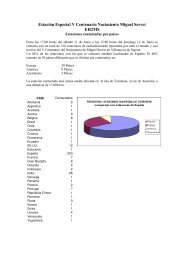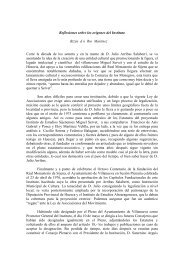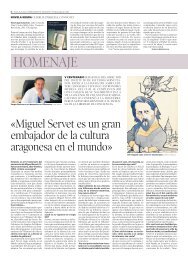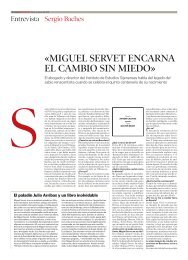New Page
New Page
New Page
You also want an ePaper? Increase the reach of your titles
YUMPU automatically turns print PDFs into web optimized ePapers that Google loves.
The transpositions are, however, not mechanical. Dávid attempts to put the new Christology in effect,<br />
which is incompatible with the Servetian view of Christ's real existence as logos in the Old<br />
Testament, and which is particularly far from the later version of this view, full of Platonic elements,<br />
assuming this Logos Christ as the arche-form of all beings. It is very interesting that Dávid uses a procedure<br />
during the reinterpretation that Servet had been fond of using. We have seen that Servet had read a<br />
complicated system of figures out of the Old Testament foreshadowing the <strong>New</strong>, and the Hungarian<br />
Antitrinitarian was doing the same. In the case of this biblical passage, however, the applied procedure<br />
gets a different dimension since it is not the really existing Logos Christ that symbolizes Jesus Christ who<br />
was to be incarnated later, but God's way of action refers to what was to come to pass later in Christ. This<br />
not quite insignificant difference reinterprets the applied Servetian procedures but without hindering their<br />
application. Thus, despite the Christological differences, the thought that man's creation includes the<br />
mystery of the later re-creation could find its way into Dávid's work.<br />
It would appear that such an interpretation of this biblical passage was formed by Ferenc Dávid<br />
independently. This is the product of the period when he was still strongly influenced by Servetian<br />
Christology, formulating the first attempts at reconciliation, but it would persistently survive in his later<br />
works as well. Conspicuously, the following explanation can be found in De falsa et vera, a record of the<br />
joint Polish--Hungarian view: +And if they ask whom God ordered when He said `let us make', lest we<br />
get involved in empty speculations we shall answer either that He ordered the angels since He often used<br />
their labours in the days of the Old Testament or that the verb `let us make' is not the word of the giver of<br />
orders but of one preparing for heavy work in himself and that is why Moses used the plural instead of the<br />
singular according to the Hebrew custom, as it is shown in that and in the following chapters as<br />
well."116 He mentions that the Rabbinates unanimously teach that in the Old Testament God created<br />
everything through the angels. The publication regards this statement as more compatible with the<br />
Scripture than that of his opponents.<br />
It should be obvious from all this that Dávid had closer ties to the Servetian tradition than had De<br />
falsa et vera and these ties existed till the early 1570s. It is only in his Az egy a magától való felséges<br />
Istenral [On the great God who exists by Himself]117 published in 1571 that Dávid fully accepts the<br />
interpretation of the biblical passage in question as given in De falsa et vera.<br />
Since the conclusion does not contain significantly new ideas, and since we have touched upon it<br />
as far as necessary, it will not be discussed it detail. It is much more important to mention the most<br />
important conclusions of the analysis of the Latin, Polish and Hungarian texts mentioned in this chapter.<br />
It will have become clear from the above that the chapter De discrimine of De falsa et vera,<br />
Grzegorz Pawel's Rozdzial starago Testamentum and Dávid's Rövid útmutatás are closely related works.<br />
Nor can it be doubted that Restitutio christianismi was heavily relied upon when all these three works<br />
were written. Yet, it is also clear that the treatment of the same subject caused different problems to come<br />
to the surface in the Polish and in the Hungarian works. Thus the discussion of the differences between<br />
the Old and the <strong>New</strong> Testaments was intertwined with socio-ethical questions in one case and with<br />
hermeneutical problems plus the effort to transplant the new Christology in the other. This parallel<br />
excellently shows the positions of the two movements at approximately the same time, and the chapter<br />
De discrimine of their joint work should obviously be regarded as the concise summary of the minimum<br />
that both partied considered acceptable.<br />
Of course, it is again impossible to tell who was the author of the Latin chapter and whether its<br />
writing or that of an earlier version had in this case, too preceded the writing of the works in the vernacular.<br />
After the analogy of the chapters considered earlier, I am inclined to accept this. Furthermore, it<br />
would seem probable that the author of the concise, to the point version in De falsa et vera was<br />
Blandrata.118<br />
40







